Trace both current paths from output, and you find they both end up at ground. Via R3 directly, and via R2, R1 and V1.
So if the output sinks current I, that current must come from ground. Simple as that...
The more interesting question, is what happens to it inside the opamp. From the opamp output there is no direct connection, internally, to ground. Instead, there are connections via both the V+ and V- terminals and your external voltage sources V2,V3 to ground. So inside the opamp, the output current ought to appear as an imbalance between the currents supplied by V2 and V3, and that imbalance should return the missing current to ground, closing the loop.
One clue is the supply currents themselves which are identical, enormous (for a 741) and look like worst-case ratings. A more realistic value for these would be 3-5mA (+ the output current on V3 in this case), up to a maximum of 24mA, at which point the opamp would fail to deliver all the required current (say, 20mA) at the output.
So it looks as if your opamp model is too simplistic to reflect this behaviour, which you would undoubtedly observe in a real circuit. Is that Robert Pease I hear cackling in the background?



